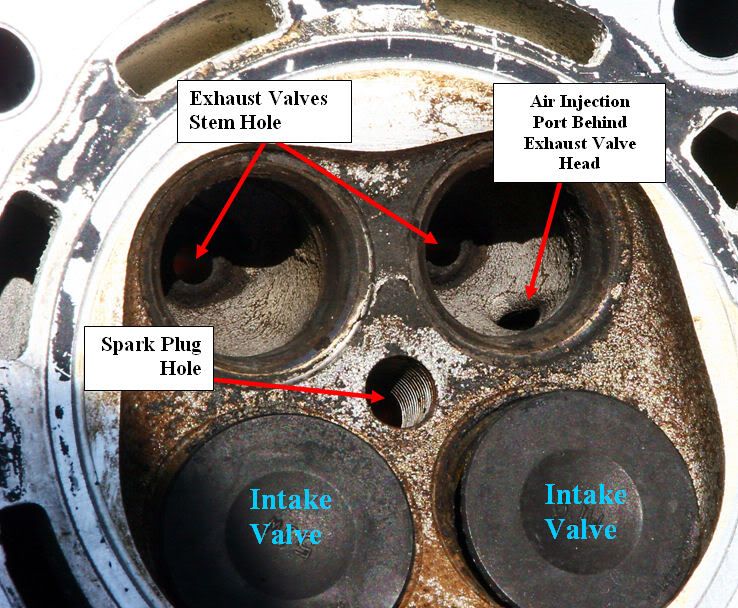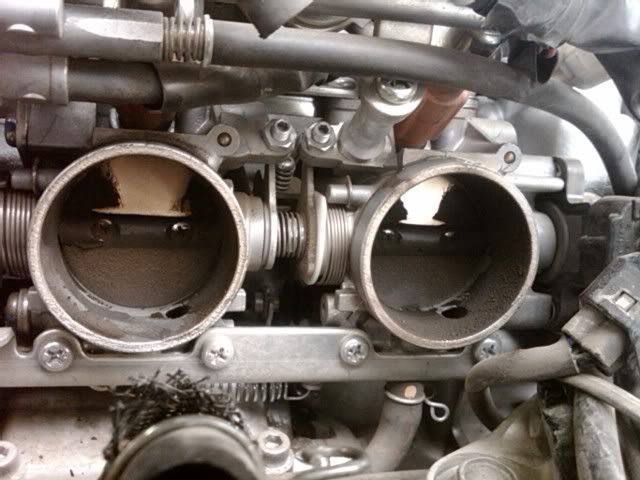The PAIR air injection port is located in the cylinder head exhaust port right at the exhaust valve and should not be the culprit causing dirty intake tracks.
There is a phenomena known as 'back-streaming' which is likely to be related. Air is viscous and elastic, engine designers use this property to improve volumetric efficiency. During the induction phase the intake valves are open, a mass of air is moving quite rapidly from the air box into the cylinder. At some point the ECU fires the fuel injector misting the air flow with mostly atomized gas. On or about the time the intake valves slam close the fuel injectors are closed. If there is any velocity left to the intake air mass, it will strike the back of the intake valves and get reflected back along the intake tract. If there is any trace of atomized fuel left, it is dragged along with the rebounding air mass. The fine traces of fuel will coat the intake track when the air mass becomes still. Any traces of dust that made it past the pores of the air filter will stick to the fuel traces. The design of the cam (timing, overlap and ramp speed), intake runner shape and runner length can make back-streaming much worse or almost non-existent.





